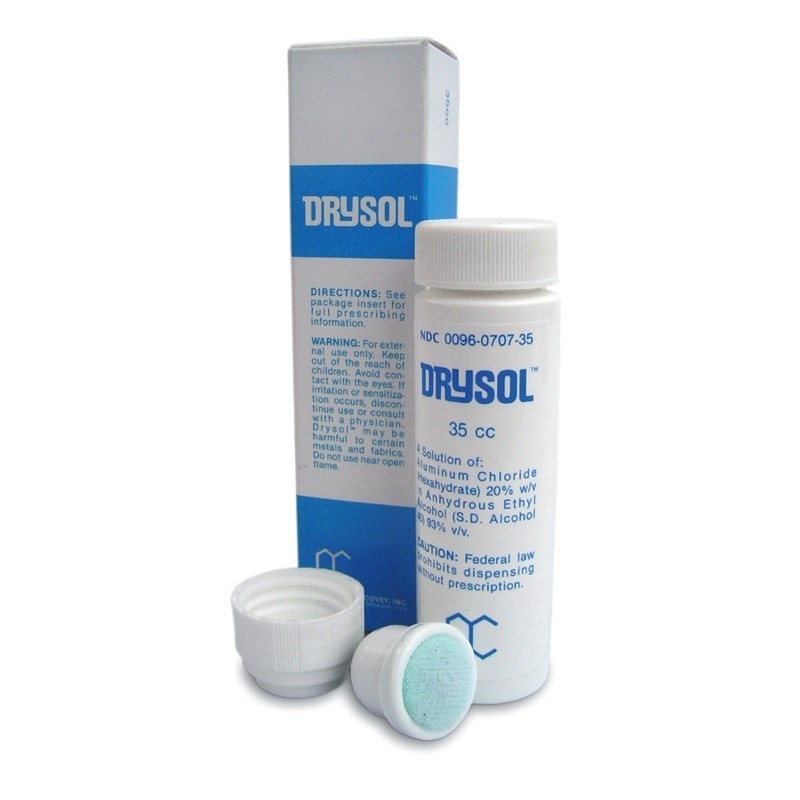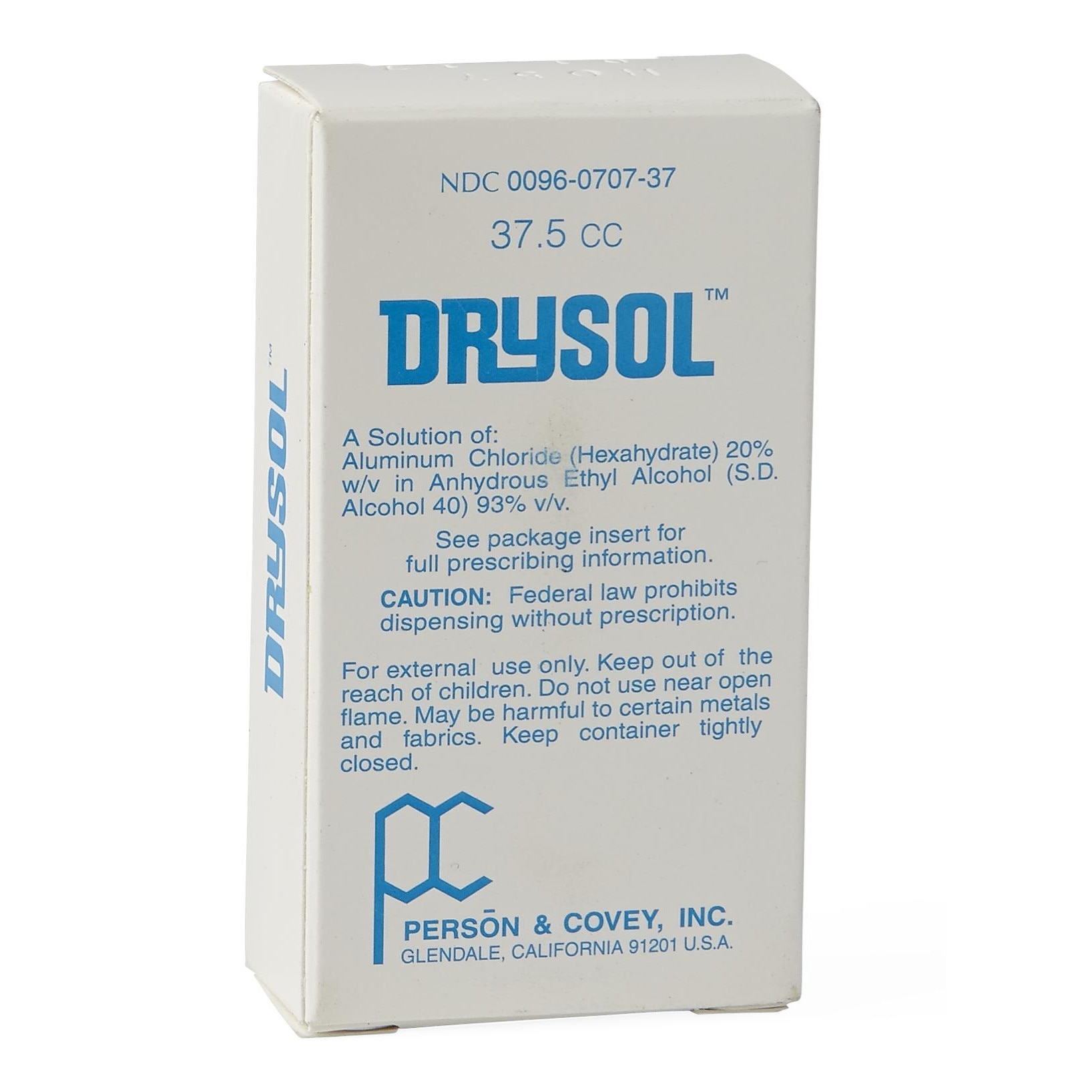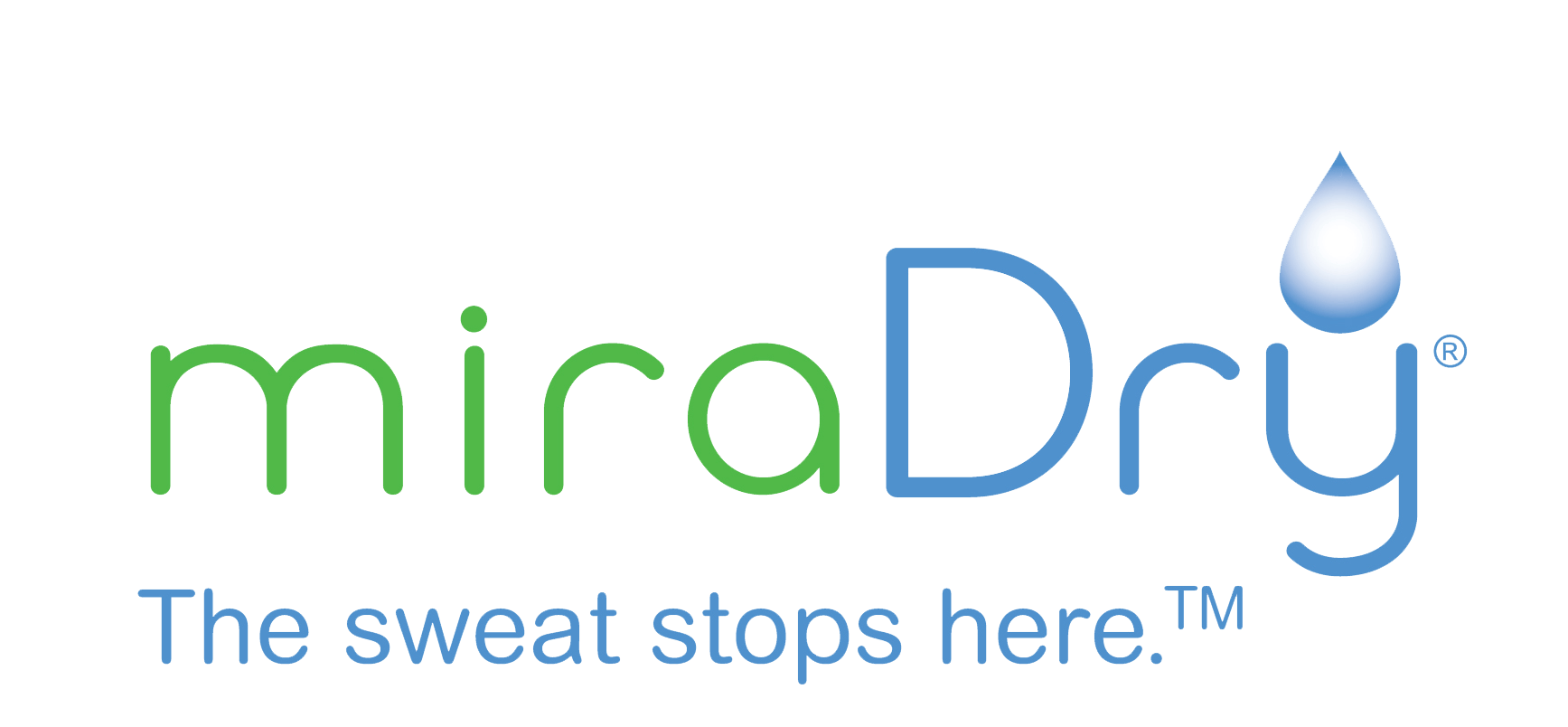How does drysol work. Drysol: Effective Treatment for Excessive Sweating (Hyperhidrosis)
How does Drysol work to treat excessive sweating. What is hyperhidrosis and its types. What are the potential side effects of using Drysol. What alternative treatments are available for hyperhidrosis.
Understanding Hyperhidrosis: The Condition Behind Excessive Sweating
Hyperhidrosis is a medical condition characterized by excessive sweating beyond what is necessary for normal thermoregulation. This condition affects approximately 5% of Americans, totaling around 15.3 million people. However, the actual number may be higher as many individuals do not report their symptoms to healthcare providers.
Sweating is a natural bodily response to various stimuli, including:
- Increased temperature
- Physical exercise
- Emotional states (anger, embarrassment, nervousness, fear)
For those with hyperhidrosis, sweating occurs excessively and often without typical triggers. This can lead to significant discomfort and social embarrassment.

Types of Hyperhidrosis
Hyperhidrosis is classified into two main types:
- Primary Focal Hyperhidrosis
- Secondary Generalized Hyperhidrosis
Primary focal hyperhidrosis is characterized by excessive sweating as the primary medical condition, not caused by medications or other medical issues. It typically affects specific body areas symmetrically, such as:
- Hands
- Feet
- Underarms
- Face/head
Symptoms of primary focal hyperhidrosis often begin in childhood or adolescence, occurring at least once a week but rarely during sleep. There appears to be a genetic component, as many affected individuals have family members with similar symptoms.
Secondary generalized hyperhidrosis, on the other hand, is caused by underlying medical conditions (e.g., hyperthyroidism, menopause) or medication side effects. It typically affects larger body areas, starts in adulthood, and may cause night sweats.
Drysol: A Powerful Prescription Antiperspirant for Hyperhidrosis
Drysol is a prescription-strength topical antiperspirant specifically designed to treat hyperhidrosis. Its active ingredient is aluminum chloride hexahydrate, a metallic salt that effectively reduces excessive sweating.

How does Drysol differ from over-the-counter antiperspirants?
The main distinction between Drysol and over-the-counter antiperspirants lies in the concentration of active ingredients:
- Drysol can contain up to 20% aluminum chloride hexahydrate
- Over-the-counter antiperspirants are limited to a maximum of 15% aluminum chloride hexahydrate
Additionally, over-the-counter products may use different metallic salts, such as aluminum chlorohydrate or aluminum zirconium salts, in varying concentrations.
The Science Behind Drysol’s Effectiveness
Drysol’s efficacy in treating hyperhidrosis is attributed to its active ingredient, aluminum chloride hexahydrate. This compound works through a specific mechanism to reduce sweating.
How does Drysol work to reduce sweating?
The process by which Drysol reduces perspiration involves several steps:
- Application: Drysol is applied to the affected skin areas
- Mixing: The aluminum chloride salt mixes with sweat on the skin’s surface
- Absorption: The salt-sweat mixture is drawn into the sweat ducts
- Chemical reaction: A reaction occurs within the sweat duct
- Blockage: The reaction creates a plug that blocks the sweat gland
- Reduced sweating: The blockage leads to decreased perspiration in the treated area
This targeted approach allows Drysol to effectively manage excessive sweating in specific body regions affected by hyperhidrosis.

Potential Side Effects of Drysol Treatment
While Drysol is an effective treatment for hyperhidrosis, it may cause some side effects. These are typically limited to the application sites and resolve upon discontinuation of the product.
What are the common side effects of using Drysol?
Users of Drysol may experience the following side effects:
- Skin irritation
- Stinging sensation at the application site
- Itching in treated areas
- Burning or prickling feeling on the skin
- Hyperpigmentation (darkening of the skin)
It’s important to note that these side effects are generally localized and temporary. If persistent or severe symptoms occur, it’s advisable to consult a healthcare provider.
Alternative Treatments for Hyperhidrosis
While prescription antiperspirants like Drysol are often the first-line treatment for hyperhidrosis, several alternative options are available for those seeking different approaches or experiencing limited success with topical treatments.
What other treatments are available for excessive sweating?
Alternative treatments for hyperhidrosis include:

- Over-the-counter antiperspirants: Though less potent than prescription options, these can be effective for milder cases of hyperhidrosis
- Iontophoresis: This treatment involves immersing hands or feet in water while a low-voltage electric current is passed through, temporarily disabling sweat glands
- Botulinum toxin injections: Commonly known as Botox, these injections can temporarily block the nerves that stimulate sweating
- Oral medications: Anticholinergic drugs may be prescribed to reduce overall body sweating
- MiraDry: This non-invasive treatment uses electromagnetic energy to permanently eliminate underarm sweat glands
- Surgical options: In severe cases, procedures such as sweat gland removal or endoscopic thoracic sympathectomy may be considered
The choice of treatment depends on the severity of hyperhidrosis, affected body areas, and individual patient factors. A healthcare provider can help determine the most suitable approach.
Lifestyle Modifications to Complement Hyperhidrosis Treatment
In addition to medical treatments, certain lifestyle changes can help manage hyperhidrosis symptoms and improve quality of life for those affected by excessive sweating.

How can lifestyle changes help manage hyperhidrosis?
Consider the following lifestyle modifications to complement hyperhidrosis treatment:
- Choose breathable fabrics: Opt for natural, moisture-wicking materials like cotton, linen, or special athletic fabrics
- Use absorbent products: Sweat pads or specially designed clothing can help manage moisture
- Practice good hygiene: Frequent bathing and use of antibacterial soaps can reduce odor associated with excessive sweating
- Manage stress: Since stress can trigger sweating, relaxation techniques like meditation or yoga may be beneficial
- Adjust diet: Avoid trigger foods and beverages, such as spicy foods, caffeine, and alcohol
- Stay hydrated: Proper hydration helps regulate body temperature more efficiently
- Use shoe inserts: For those with plantar hyperhidrosis, absorbent insoles can help manage foot sweating
Implementing these lifestyle changes alongside medical treatments can significantly improve the management of hyperhidrosis symptoms.

The Psychological Impact of Hyperhidrosis and Treatment Options
Excessive sweating can have a profound impact on an individual’s psychological well-being, affecting various aspects of daily life and social interactions. Understanding and addressing these psychological effects is crucial for comprehensive hyperhidrosis management.
How does hyperhidrosis affect mental health?
The psychological impact of hyperhidrosis may include:
- Social anxiety and avoidance of social situations
- Decreased self-confidence and self-esteem
- Embarrassment and self-consciousness
- Depression and mood disorders
- Occupational challenges and career limitations
- Relationship difficulties
Addressing these psychological aspects is essential for improving overall quality of life for individuals with hyperhidrosis. Consider the following approaches:
- Cognitive-behavioral therapy: This can help develop coping strategies and manage anxiety related to excessive sweating
- Support groups: Connecting with others who have hyperhidrosis can provide emotional support and practical advice
- Patient education: Understanding the condition and available treatments can empower individuals to take control of their symptoms
- Holistic treatment approach: Combining medical treatments with psychological support for comprehensive care
By addressing both the physical and psychological aspects of hyperhidrosis, individuals can achieve better overall outcomes and improved quality of life.

Future Perspectives in Hyperhidrosis Treatment
As research in the field of hyperhidrosis continues to advance, new treatment options and improved understanding of the condition are emerging. These developments hold promise for more effective and personalized approaches to managing excessive sweating.
What advancements are on the horizon for hyperhidrosis treatment?
Several areas of research and development show potential for improving hyperhidrosis treatment:
- Gene therapy: Targeting specific genes associated with hyperhidrosis may lead to more targeted treatments
- Nanotechnology: Development of nanoparticle-based antiperspirants could enhance efficacy and reduce side effects
- Sweat gland mapping: Advanced imaging techniques may allow for more precise treatment targeting
- Biofeedback devices: Wearable technology could help individuals better manage and predict sweating episodes
- Novel drug formulations: Research into new topical and oral medications may yield more effective treatment options
- Minimally invasive procedures: Advancements in surgical techniques may provide longer-lasting results with fewer side effects
As these areas of research progress, individuals with hyperhidrosis can look forward to potentially more effective, personalized, and less invasive treatment options in the future.

In conclusion, hyperhidrosis is a challenging condition that affects millions of people worldwide. While treatments like Drysol offer effective management of symptoms, ongoing research and a comprehensive approach to care, including addressing psychological impacts, are crucial for improving outcomes. As our understanding of hyperhidrosis grows and new treatment modalities emerge, individuals affected by this condition can hope for increasingly effective solutions to manage their symptoms and improve their quality of life.
What Is Drysol? How Does Treat Excessive Sweating?
- What is hyperhidrosis?
- What is Drysol?
- How does Drysol work?
- Potential side effects of Drysol
- Alternative hyperhidrosis treatments
If you have any medical questions or concerns, please talk to your healthcare provider. The articles on Health Guide are underpinned by peer-reviewed research and information drawn from medical societies and governmental agencies. However, they are not a substitute for professional medical advice, diagnosis, or treatment.
When your body senses a rise in temperature, it turns on your sweat glands—whether you want it to or not! Several things can lead to sweating, including warm temperatures, exercise, or feelings of anger, embarrassment, nervousness, or fear. Sweating is a necessary and natural response to an increase in body temperature to help you cool off. However, if you sweat excessively, you may have a medical condition known as hyperhidrosis.
People with hyperhidrosis often sweat more than usual, even without the typical triggers. If you think you may have hyperhidrosis, you are not alone—almost 5% of Americans (15.3 million people) have hyperhidrosis (Doolittle, 2016). This number is likely lower than the actual amount of people with hyperhidrosis because many never mention it to their healthcare provider. Most people don’t realize that their excessive sweating is a medical problem.
Hyperhidrosis is divided into two types: primary focal hyperhidrosis and secondary generalized hyperhidrosis.
If the excessive sweating itself is the medical condition, then you have primary hyperhidrosis. In other words, your hyperhidrosis is not caused by any medications you may be taking or by another medical condition. Primary focal hyperhidrosis most commonly affects the hands, feet, underarms, and/or face/head. These areas are usually affected equally on both sides of the body.
Most people with primary hyperhidrosis report that their symptoms began in childhood or during their teenage years. In addition, the sweating episodes usually happen at least once a week, but rarely during sleep. Genetics seems to play a role as most people with primary hyperhidrosis also have a family member with excessive sweating.
In addition, the sweating episodes usually happen at least once a week, but rarely during sleep. Genetics seems to play a role as most people with primary hyperhidrosis also have a family member with excessive sweating.
Secondary generalized hyperhidrosis, on the other hand, is sweating is caused by another medical condition (like hyperthyroidism or menopause) or medication side effects. People with secondary generalized hyperhidrosis may complain of sweating “all over” as this condition often affects larger areas of the body. Unlike primary focal hyperhidrosis, secondary generalized hyperhidrosis usually starts in adulthood, and sweating can happen while asleep (night sweats).
Drysol is a prescription topical antiperspirant often used to treat hyperhidrosis. The active ingredient in Drysol is the metallic salt, aluminum chloride hexahydrate. Over-the-counter antiperspirants can also contain metallic salts, but the main difference between Drysol and over-the-counter antiperspirants is the type and concentration of metallic salts. The maximum concentration of aluminum chloride hexahydrate allowed by the FDA in over-the-counter antiperspirants is 15%. On the other hand, Drysol can go as high as 20% (FDA, 2019). Other metallic salts, like aluminum chlorohydrate and aluminum zirconium salts, can also be used in over-the-counter antiperspirants in varying concentrations.
The maximum concentration of aluminum chloride hexahydrate allowed by the FDA in over-the-counter antiperspirants is 15%. On the other hand, Drysol can go as high as 20% (FDA, 2019). Other metallic salts, like aluminum chlorohydrate and aluminum zirconium salts, can also be used in over-the-counter antiperspirants in varying concentrations.
Drysol’s effectiveness comes from the aluminum chloride salt, aluminum chloride hexahydrate. When you sweat, your sweat glands pump sweat onto your skin’s surface. After applying Drysol to your skin, the metallic salts mix with your sweat and then get pulled into the sweat duct. Once there, a chemical reaction occurs, and the salt-sweat mixture blocks the sweat gland, reducing perspiration.
Hyperhidrosis
Last updated: Feb 27, 2020
7 min read
Like any medication, there can be side effects with Drysol. Since this is a topical medication, the side effects are usually limited to the sites of application and then resolve after stopping it. Side effects include (Woolery-Lloyd, 2009):
Side effects include (Woolery-Lloyd, 2009):
- Skin irritation
- Stinging at the site of application
- Itching at the site of application
- Burning or prickling sensation at the site of application
- Darkening of the skin (hyperpigmentation)
While prescription antiperspirants like Drysol are some of the first treatments recommended for hyperhidrosis, other options exist, including:
- Over-the-counter antiperspirants: These are often less effective than the prescription antiperspirants for people with excessive sweating but are certainly an option to try.
- Iontophoresis: Immersing your hands or feet in tap water while a medical device sends a low-voltage electric current through the water to shut down the sweat glands.
- Anticholinergic medications: These oral medications prevent acetylcholine (a brain chemical or neurotransmitter) from turning on your sweat glands.
- Botulinum toxin (brand name Botox): These are injections that temporarily block acetylcholine release to prevent the stimulation of sweat glands in affected areas.

- Surgery: Some people have surgery to remove the sweat glands or cut the sympathetic nerves that stimulate you to sweat in a particular area (sympathectomy).
If you have hyperhidrosis, Drysol may be a treatment option for you. Talk to your healthcare provider about your symptoms and what remedies you have already tried. Hyperhidrosis can be embarrassing for some, but it is treatable
- Doolittle, J., Walker, P., Mills, T., & Thurston, J. (2016). Hyperhidrosis: an update on prevalence and severity in the United States. Archives of Dermatological Research, 308(10), 743–749. doi: 10.1007/s00403-016-1697-9 https://www.ncbi.nlm.nih.gov/pmc/articles/PMC5099353/
- U.S Food and Drug Administration (FDA) Code of Federal Regulations Title 21. (2019). Retrieved 9 June 2020, from https://www.accessdata.fda.gov/scripts/cdrh/cfdocs/cfcfr/CFRSearch.cfm?CFRPart=350&showFR=1 https://www.accessdata.fda.gov/scripts/cdrh/cfdocs/cfcfr/CFRSearch.cfm?CFRPart=350&showFR=1
- Woolery-Lloyd, H.
 , & Valins, W. (2009). Aluminum chloride hexahydrate in a salicylic Acid gel: a novel topical agent for hyperhidrosis with decreased irritation. The Journal of clinical and aesthetic dermatology, 2(6), 28–31. https://pubmed.ncbi.nlm.nih.gov/20729946/
, & Valins, W. (2009). Aluminum chloride hexahydrate in a salicylic Acid gel: a novel topical agent for hyperhidrosis with decreased irritation. The Journal of clinical and aesthetic dermatology, 2(6), 28–31. https://pubmed.ncbi.nlm.nih.gov/20729946/
Dr. Mike is a licensed physician and the Director, Medical Content & Education at Ro.
Drysol topical Uses, Side Effects & Warnings
Save
Generic name: aluminum chloride hexahydrate (topical) [ al-LOO-min-um-KLOR-ide-HEX-a-HYE-drayt-TOP-ik-al ]
Brand names: Drysol, Hypercare, Xerac AC
Drug class: Miscellaneous topical agents
Medically reviewed by Drugs.com on Oct 13, 2022. Written by Cerner Multum.
What is Drysol?
Drysol is an antiperspirant that works by affecting the cells that produce sweat.
Drysol (for the skin) is used to treat excessive sweating, also called hyperhidrosis.
Drysol may also be used for purposes not listed in this medication guide.
Warnings
Follow all directions on your medicine label and package. Tell each of your healthcare providers about all your medical conditions, allergies, and all medicines you use.
Before taking this medicine
You should not use Drysol if you are allergic to it.
Tell your doctor if you have ever had kidney disease.
Tell your doctor if you are pregnant or breastfeeding.
How should I use Drysol?
Follow all directions on your prescription label and read all medication guides or instruction sheets. Your doctor may occasionally change your dose. Use the medicine exactly as directed.
Do not take by mouth. Topical medicine is for use only on the skin. Do not use on broken skin, or skin that has recently been shaved.
For best results, apply the medicine at bedtime and leave the medicine on your skin for 6 to 8 hours.
Read and carefully follow any Instructions for Use provided with your medicine. Ask your doctor or pharmacist if you do not understand these instructions.
Wash and completely dry the skin before applying Drysol. If needed, dry the skin with a hair dryer on the warm setting.
Use the applicator provided with your medicine, or use a cotton ball to apply the medicine.
After use on the underarms: Wear a tee-shirt to keep the medicine from rubbing off onto your bed linens.
After use on the hands or feet: Wrap your hands or feet in plastic wrap and cover them with cotton gloves or socks. Leave the gloves or socks on while you sleep.
After use on the scalp: Wear a plastic shower cap to bed to keep the medicine from rubbing off onto your bed linens.
In the morning, remove the covering from treated skin areas and wash or shampoo the skin thoroughly, then towel dry. Do not reuse plastic wrap for additional applications. You may rinse and reuse the plastic shower cap.
Store the bottle tightly closed at room temperature, away from heat or open flame. This medicine contains alcohol and is flammable. The medicine will evaporate quickly when exposed to air.
Do not share this medicine with another person, even if they have the same symptoms you have.
What happens if I miss a dose?
Skip the missed dose and use your next dose at the regular time. Do not use two doses at one time.
What happens if I overdose?
An overdose of Drysol is not expected to be dangerous. Seek emergency medical attention or call the Poison Help line at 1-800-222-1222 if anyone has accidentally swallowed the medication.
What should I avoid while using aluminum chloride hexahydrate?
Do not apply any other deodorants or antiperspirants while you are using Drysol.
Avoid getting Drysol in your eyes, mouth, and nose, or on your lips. If contact does occur, rinse with water.
This medicine can stain certain types of fabric or metals that it comes in contact with.
Drysol side effects
Get emergency medical help if you have signs of an allergic reaction: hives; dizziness; chest tightness, difficult breathing; swelling of your face, lips, tongue, or throat.
Drysol may cause serious side effects. Call your doctor at once if you have:
Common side effects of Drysol may include:
This is not a complete list of side effects and others may occur. Call your doctor for medical advice about side effects. You may report side effects to FDA at 1-800-FDA-1088.
What other drugs will affect Drysol?
Medicine used on the skin is not likely to be affected by other drugs you use. But many drugs can interact with each other. Tell each of your healthcare providers about all medicines you use, including prescription and over-the-counter medicines, vitamins, and herbal products.
More about Drysol (aluminum chloride hexahydrate topical)
- Compare alternatives
- Reviews (314)
- Side effects
- Drug class: miscellaneous topical agents
- En español
Patient resources
- Patient Information
Other brands
Hypercare, Xerac AC
Professional resources
- Prescribing Information
Related treatment guides
- Hyperhidrosis
Further information
Remember, keep this and all other medicines out of the reach of children, never share your medicines with others, and use this medication only for the indication prescribed.


 , & Valins, W. (2009). Aluminum chloride hexahydrate in a salicylic Acid gel: a novel topical agent for hyperhidrosis with decreased irritation. The Journal of clinical and aesthetic dermatology, 2(6), 28–31. https://pubmed.ncbi.nlm.nih.gov/20729946/
, & Valins, W. (2009). Aluminum chloride hexahydrate in a salicylic Acid gel: a novel topical agent for hyperhidrosis with decreased irritation. The Journal of clinical and aesthetic dermatology, 2(6), 28–31. https://pubmed.ncbi.nlm.nih.gov/20729946/